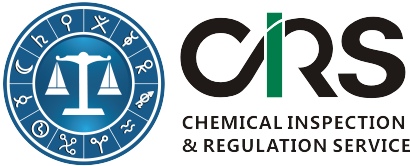SMCR 2014 Was Successfully Held in Shanghai
Original Article by Grace Chen from CIRS
October 15-16th 2014, the 4th summit meeting on chemical regulation in China, Korea and Japan (SMCR) was successfully held in Shanghai. Jointly held by Hangzhou Chemical Inspection & Regulation Services Co., Ltd (CIRS), Korea Testing & Research Institute (KTR) and Japan Environmental Management Association for Industry (JEMAI) since 2011, the summit has been aiming to forge a green bridge between corporations and competent authorities in Asia-Pacific region.
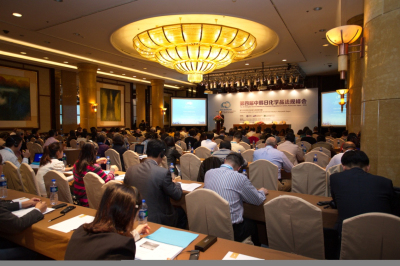
With the theme of the updates of chemical regulations worldwide and supervision mechanism, SMCR 2014 paid highly attention on chemical regulations and safety management in Asia-Pacific region. During the summit, experts from China, Korea, Japan, Taiwan, Malaysia and India were invited to give presentations, in order to help the enterprises to have a more comprehensive and profound understanding about the current situation of chemical safety management in Southeast Asia. Integrating the power of corporations, authorities and relevant associations, this summit dedicated to provide the most valuable information for all sides and to point a more clear way for the future development of the enterprises.
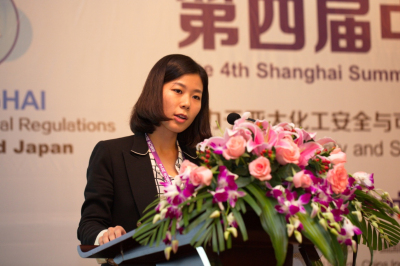
Ms. Seungin Lee from Songwon Industrial Co. Ltd. Korea
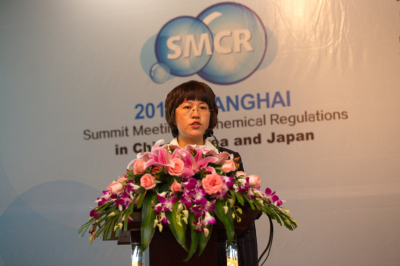
Ms. Lu Lin, from China MEP
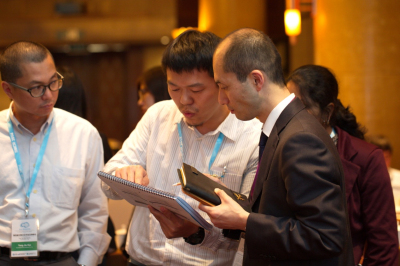
Mr. Taro Ishikwawa from JEMAI was answering questions to enterprise
The following content was cited from China Quality News:
In recent years, environmental contamination happened from time to time, illegal pollution discharge and chemical discard seemed impossible to eradicate. Therefore, how to effectively control the risk of hazardous chemicals and how to promote sustainable development of chemical industry has become a focus in the line. Presentations from scholars both domestically and internationally in the 4th summit meeting on chemical regulation in China, Korea and Japan (SMCR) carried a series of information about registration system of pollution discharge and transfer
“End-of-Pipe Control” be Modified in New Guidance
According to statistics, among 140 thousand kinds of chemicals in the market, only quite a few were tested for its influence on health and environment. Although the work safety supervision on hazardous chemicals in China includes production, operation, storage, transportation, usage and waste disposal, emphasis has been put on production safety and chemical accident prevention, environmental management has been focused on the “End-of-Pipe Control” of chemical pollution discharge.
It is reported that Chinese enterprises are still using some chemicals that have been eliminated by European or American market. Before a chemical was eliminated, relevant analysis on alternatives and the influence on social economy need to be made, suggestions from the industries also have to be widely collected. At the same time, if chemicals were not listed on the Inventory of Existing Chemical Substance Produced or Imported (IECSC), registration will be required according to the Measures on Environmental Administration of new Chemical Substances (MEP Order No.7).
Ms. Lu Lin, senior engineer at the Chinese Solid Waste and Chemicals Management Center (SCC), stated on the summit that the guidance for new chemical substance notification regulation has been under revision and more specific regulations on the range of application, classification, form of notification, application procedures and requirements on application materials would be published soon.
The main concept of this amendment is that the original framework be maintained and changes be implemented by providing more details in the existing guidance, which is also likely to be supplemented with additional provisions. Besides, suggestions from enterprises, scientific point of views and governmental administration opinions are all needed to be taken into consideration. The amendment version will not be in conflict with Order 7 and data requirement will not be changed without any sufficient reasons.
The problems that are highly concerned by the public, such as applicability of raw materials for pesticides, drugs, intermediates and fertilizers; data requirement on toxicology and eco-toxicology, for example, the rational summit of data about mutagenicity, carcinogenicity, chronic toxicity and toxicokinetics; the data requirement on intermediates and substances that can only be used for exporting and the acceptability for QSAR and Read-Across, are expected to be illustrated more clearly in the revised draft which is planning to be issued at the end of 2014 or the beginning of 2015, said Ms. Lu.
The Catalog Covers 84 kinds of Hazardous Chemicals
Since the Measures for Environmental Administration Regulation of Hazardous Chemicals (2012) - MEP Order No.22 was implemented on 1st March 2013, relevant authorities confirmed the scope of hazardous chemicals that need critical control, and issued The Catalog of Hazardous Chemicals.
So far, The Catalog of Hazardous Chemicals covers 84 types of chemicals with one of the following properties: 1. It is persistent, bio-accumulative and toxic (PBT); 2. It is massively produced or used and is very hazardous for human health and environment; 3. Other chemicals that need critical environmental supervision, such as the chemicals under the regulation of Stockholm Convention for POPs and Convention about Mercury and Minamata and etc.
Sun Jinye, director of Solid Waste and Chemicals Management Center, China MEP, stated that most of the chemicals that covered by the Catalog including nonyl phenol, purified petroleum benzin, ethylene oxide and etc., are acute or chronic toxicity in aquatic environment.
Intensive Cooperation in Worldwide Industrial Chain
With the acceleration of internationalization and the development of world industrialization, safety of chemical industry and its sustainable development have drawn increasing attention from the whole world. After the formation of EU REACH, countries in other areas all started to update their chemical regulations, and to further strengthen the safety management on chemicals and to bring significant and deep impact on world chemical industry.
Under the increasingly tougher regulatory environment, how do enterprises cope with the compliance with regulations? Faced with the technical gap, being lack of experience and substantial surge of cost, how can corporations turn challenges into opportunities? Such series of questions brought about a worldwide strategic thinking for safety work management on chemicals.
Shanghai summit meeting on chemical regulation in China, Korea and Japan (SMCR) has risen as a platform for communication of chemical safety management under such a condition. As an important part of world economy, China, Korea and Japan intensively cooperated with each other in world industrial chain, and the chemical trading between them also stands a significant status in the world, said Ms. Li Yan, managing director of CIRS.
Since 2006, chemical regulatory authorities in countries all over the world started to effectively manage chemical substances and mixtures on the basis of regulation system. Safety in chemical industry and its sustainable development have drawn more and more attention. In order to achieve the goal of Strategic Approach to International Chemicals Management (SAICM) in 2020, all nations will successively establish and improve their chemical regulations to strengthen the supervision on chemicals. It is hoped that SMCR can effectively promote a better understanding of chemical regulation among China, Korea, Japan and other countries.
It is known that the chemical management in China started later than developed countries, especially in terms of regulations related to POPs management. Ms. Li Yan said that strengthening international exchange and cooperation can not only ensure a reasonable chemical supervision, but also can realize a sustainable development in chemical industry.
The original article link:
http://www.cqn.com.cn/news/zgzlb/diyi/960982.html
Contact Us
- CIRS China
Hangzhou CIRS Co. Ltd (CIRS China)
11F Building 1, Dongguan Hi-Tech Park, 288 Qiuyi Road, Binjiang District, Hangzhou 310052, China
Tel: +86-571 8720 6555 | Fax: +86-571 8720 6533
Email: Service@cirs-reach.com
